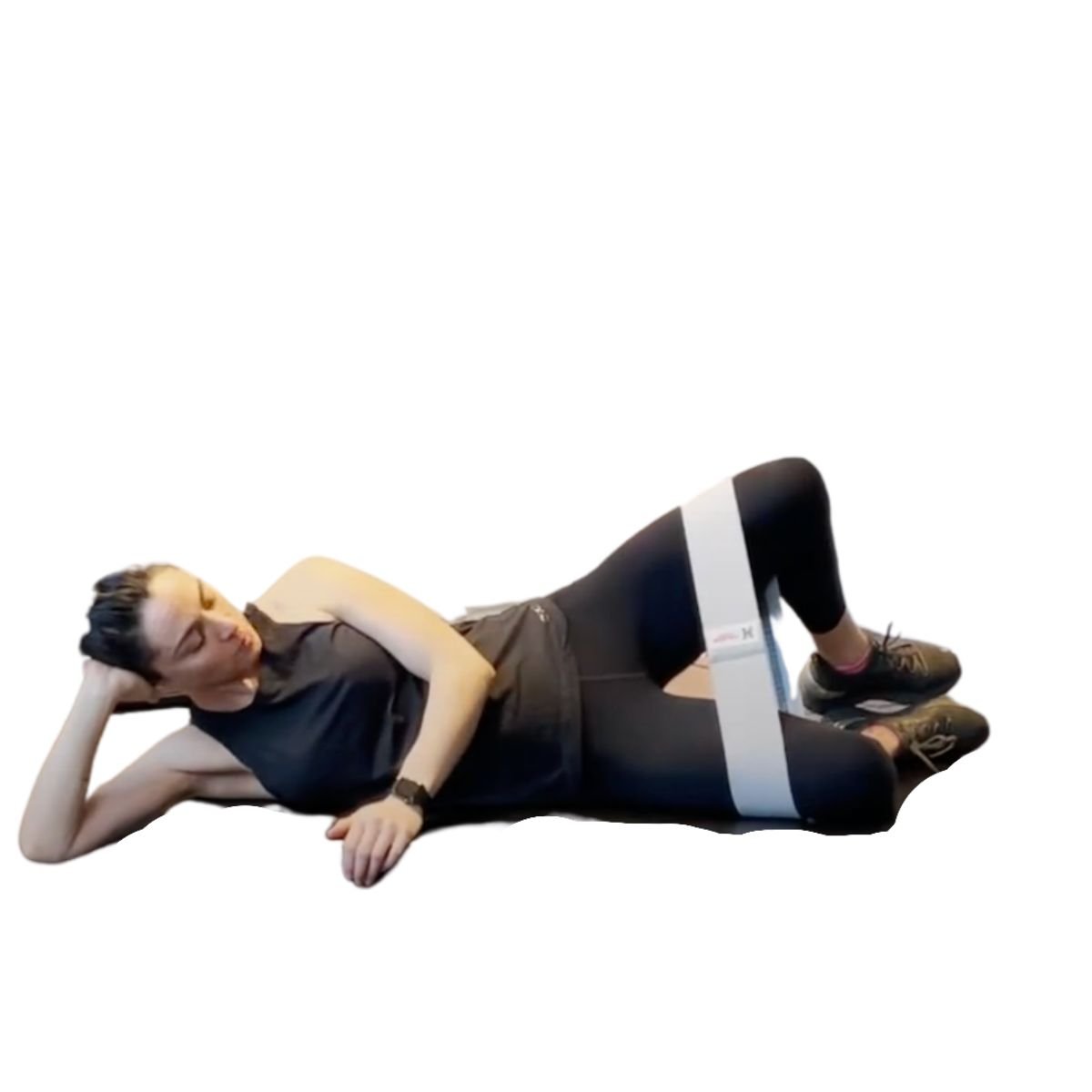Exercise Tutorial: Clamshell
Table of Contents
What Is a Clamshell Exercise
The clamshell exercise is a movement for the gluteus medius. As the name suggests, you lift the top knee while keeping the feet touching, mimicking a clam opening and closing.
How to Do Clamshell Exercise
The Clamshell exercise is a bodyweight movement that is performed lying down on your side. To learn how to perform the Clamshell exercise, follow these steps:
Lie down on the ground on your side. Your shoulders, hips, knees and ankles should all be stacked on top of each other so that if you were to draw a line through the joints, it would be perpendicular to the ground.
Decide if you would like to bend the elbow that is in contact with the floor to cradle the head, or if it is more comfortable to fully extend the arm underneath the head and in line with the body. Either variation will not impact the Clamshell exercise.
Slightly bend both knees to form a 45-degree angle.
Brace the core and begin to raise the top knee towards the sky as high as possible without moving the hips. Your feet will always be touching! Your legs will resemble a Clam opening and closing.
Pause for a second at the maximal height of the knee, and then slowly lower the top knee back to the starting position. Repeat this movement to continue to perform the Clamshell exercise.
Clamshell Exercise Form
Even though the Clamshell exercise can be viewed as a simple bodyweight movement, there are some key points to remember to perform the Clamshell exercise correctly. To achieve effective Clamshells,
Always keep the bottom leg in contact with the ground.
The feet should always be touching.
The elevation of the knee should not cause the hips to move.
Maintain a neutral spine (bracing the core can help with this!).
As well, remember to always be in control of the movement! The Clamshell exercise should not be performed rapidly, especially when the exercise has been progressed. Maintaining the proper form during the Clamshell exercise will allow you to reap the benefits of the movement when performed consistently.
Clamshell Exercise Benefits
There are multiple benefits to including the Clamshell exercise in your routine. Aside from the general health benefits that come with performing any exercise, the Clamshell exercise will,
Increase muscular strength and size in the glutes.
Increase muscular strength and size in the hips.
Helps to create a balance between the muscles in the hips and the glutes (prevents overuse injuries).
Effective way to increase glute strength with minimal risk of injury.
Effective exercise to rehabilitate a glute or hip injury.
What Does Clamshell Exercise Do
Along with the benefits of the Clamshell exercise, there are also a few reasons why the Clamshell exercise is useful. These reasons include,
The strengthening of the hips can help prevent injury and reduce low back pain
The Clamshell exercise is beneficial for runners who need stable hips
A lot of pain that avid runners or even soccer players experience originates from having weak hips. The Clamshell exercise is useful for these individuals because it helps to strengthen the hips and reduce tightness within the joint. As well, having strong hips can also contribute to reducing low back injuries or pain. In fact, the Clamshell exercise is often given to those who suffer from Sciatica or low back pain.
Clamshell Exercise For Glutes
To be blunt, most people perform the Clamshell exercise to tone their glutes! As we have previously mentioned, the Clamshell exercise targets the Glute Medius and Maximus, as well as the stabilizers of the hip, making the Clamshell and effective exercise for engaging the glutes.
Clamshell Exercise Muscles Worked
The Clamshell targets a few specific muscles that often, many people desire to increase in size and strength. Consistently including the Clamshell exercise in your routine will engage the Gluteus Medius, Gluteus Maximus, Adductor Brevis, and Hip stabilizers. The benefits of activating and strengthening these muscles is a great incentive to start performing the Clamshell exercise!
Clamshell Exercise Variations
Along with the Clamshell exercise with band, there are additional variations of the Clamshell exercise. You can read more about Clamshell exercise variations below.
Clamshell Exercise with Dumbbell Rotation
This variation of the Clamshell Exercise involves the use of a light dumbbell and the rotation of the top arm. Hold the dumbbell in the hand of the top arm. Keep the elbow tight to your side and externally rotate the forearm. Perform the external rotation at the same time as you perform the Clamshell with your legs. So, when your legs are closed, the dumbbell should be lowered. Try this Clamshell exercise for 3 sets of 10-12 reps.
Clamshell Plus Leg Lift
In this variation of the Clamshell exercise, perform the movement as usual. After you elevate the knee, raise the top foot up to be in line with the knee to perform a leg lift. Return the foot to its original position and then bring the knee back down to close the shell. Perform this movement for 3 sets of 10-12 reps.
Clamshell Plus Side Plank
The Clamshell plus Side Plank will definitely give you a challenge! To begin start in a side plank, with your knee and forearm in contact with the ground. Continue to perform the Clamshell exercise as you maintain the side plank. Try this variation for 3 sets of 10-12 reps.
Reverse Clamshell
Begin in the same position as you would during the conventional Clamshell exercise. Instead of moving the knees, you will be moving your feet! Keep the knees stacked on top of each other, and only elevate the foot upwards. Hold this position at the top for two counts, and then return the foot to the starting position.
You can also progress Reverse Clamshells by including a resistance band around the lower legs!

